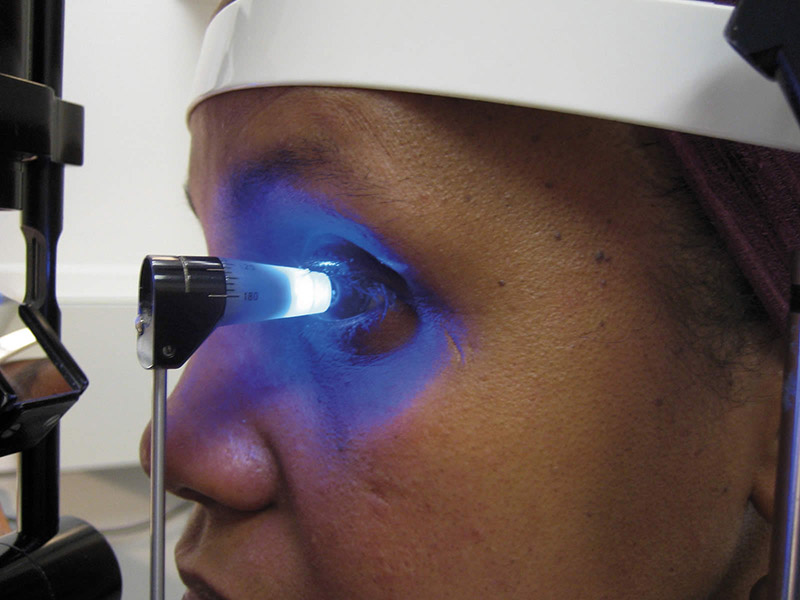Glaucoma Testing and Treatment
What is Glaucoma?
Glaucoma is an eye disease where the optic nerve is damaged as a result of pressure building up in the eye over a period of time. Often called the “sneak thief of sight,” this eye condition has no early signs or symptoms until damage has already occurred. At O’Fallon Family Eyecare we make sure to offer glaucoma testing and treatment of the highest standard.
The nature of glaucoma makes it vital to having a regular comprehensive eye exam so your local eye doctor can test the pressure of the eye to make sure there are no problems. Your risk of developing glaucoma are higher if you have a family history of this eye condition as it is typically an inherited eye disease.
The optic nerve is responsible for transmitting what your eyes see and other information to your brain. Thus, when there is damage to the optic nerve via glaucoma, there is a loss of peripheral vision, also known as tunnel vision. Untreated, glaucoma can lead to total blindness.
What is a Glaucoma Test?
Glaucoma is the generalized name for a group of eye diseases that damage the optic nerve of the eye, preventing the eye from sending accurate visual information to the brain.
Glaucoma tests are designed to test your eyes for one of the key symptoms of the disease—increased eye pressure—however only a comprehensive eye exam can reveal whether or not you have glaucoma.
Increased pressure inside the eye is often a key indicator of glaucoma, though not exclusively so. Eye doctors can use a number of tests for eye pressure, but will, by default, check for signs of glaucoma as part of a detailed examination of the retina—the light-sensitive area at the back of the eye responsible for processing images.
How Does Glaucoma Testing Work?
A glaucoma test is usually part of a routine eye exam. Both types of glaucoma tests measure the internal pressure of the eye.
One glaucoma test involves measuring what happens when a puff of air is blown across the surface of the eye. (A puff test) Another test uses a special device (in conjunction with eye-numbing drops) to “touch” the surface of the eye to measure eye pressure.
While increased eye pressure is a key indicator of the disease, it does not necessarily mean you have a glaucoma diagnosis. In fact, the only way to detect glaucoma is to have a detailed, comprehensive eye exam that often includes dilation of the pupils.
So “true” glaucoma testing actually involves examining the retina and optic nerve at the back of the eye for signs of the disease.

Are You at High Risk for Glaucoma?
- If you are over the age of 40 and if you have a family history of glaucoma.
- GRF recommends that African-Americans get a thorough check for glaucoma every one to two years after age 35.
- Talk to family members about glaucoma. If family members have glaucoma, then your glaucoma risk is increased.
- If you have diabetes or high blood pressure.
- Hispanic Americans in older age groups are also at greater risk for glaucoma.
- Steroid Users – adults who require approximately 14 to 35 puffs of steroid inhaler to control asthma have an increased incidence of glaucoma.
- Eye Injury – Injury to the eye may cause secondary open-angle glaucoma. This type of glaucoma can occur immediately after the injury or years later.
